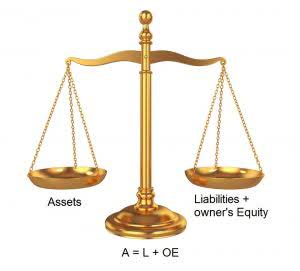
Other names used for this equation are balance sheet equation and fundamental or basic accounting equation. Individual transactions which result in income and expenses being recorded will ultimately result in a profit or loss for the period. The term capital includes the capital introduced by the business owner plus or minus the accounting equation can be expressed as any profits or losses made by the business. Profits retained in the business will increase capital and losses will decrease capital. The accounting equation will always balance because the dual aspect of accounting for income and expenses will result in equal increases or decreases to assets or liabilities.

Neglect of Time Value of Money

Borrowing money and making purchases on credit are common practices for companies of every size. The relationship between assets, liabilities, and owner’s equity can be expressed as an equation, as will be shown in the following example. On the basis of this dual nature of transactions, modern accountants have developed a mathematical formula that is referred to as the accounting equation.
Booking Fixed Asset Journal Entry With Examples
We’ll explain what that means, along with everything else you need to know about the accounting equation as we go on. During the month of February, Metro Corporation earned a total of $50,000 in revenue from clients who paid cash. Metro Courier, Inc., was organized as a corporation on January 1, the company issued shares (10,000 shares at $3 each) of common stock for $30,000 cash to Ron Chaney, his wife, and their son. Net value refers to the umbrella term that a company can keep after paying off all liabilities, also known as its book value.
Accounting Equation Formula and Calculation

The figures for this equation come from the balance sheet, which shows the overall financial position of a company. If you know two components of the equation, you can easily calculate the third one. Use these free balance sheet templates to create balance sheets with ease. If an accounting equation does not balance, it means that the accounting transactions are not properly recorded. To calculate the accounting equation, we first need to work out the amounts of each asset, liability, and equity in Laura’s business.
- Most sole proprietors aren’t going to know the knowledge or understanding of how to break down the equity sections (OC, OD, R, and E) like this unless they have a finance background.
- The accounting equation is fundamental to the double-entry bookkeeping practice.
- Below are some examples of transactions and how they affect the accounting equation.
- Issuing new shares or receiving additional capital from owners increases equity, which enhances the company’s financial strength.
- That’s why you’re better off starting with double-entry bookkeeping, even if you don’t do much reporting beyond a standard profit and loss statement.
- While single-entry accounting can help you kickstart your bookkeeping knowledge, it’s a dated process that many other business owners, investors, and banks won’t rely on.
In order to determine what belongs to the owners, we first take the claims that the creditors have (which are liabilities) and subtract those from the assets. The amount that is left over is what is known as the owner’s equity in the assets. In this form, it is easier to highlight the relationship between shareholder’s equity and debt (liabilities). As you can see, shareholder’s equity is the remainder after liabilities have been subtracted from assets.
- At the heart of HighRadius’s R2R solution is an AI-powered platform designed to cater to all accounting roles.
- The accounting equation is also useful when considering how these assets will influence the company’s equity and overall financial strength when considering new investments.
- This ratio measures how much of a company’s operations are financed through debt versus owner equity.
- Creditors and owners can both stake a claim on the assets of a company.
- To further illustrate the analysis of transactions and their effects on the basic accounting equation, we will analyze the activities of Metro Courier, Inc., a fictitious corporation.
- The owner’s equity is the share the owner has on these assets, such as personal investments or drawings.

As this is not really an expense of the business, Anushka is effectively being paid amounts owed to her as the owner of the business (drawings). Therefore cash (asset) will reduce by $60 to pay the interest (expense) of $60. At the heart of HighRadius’s contribution margin R2R solution is an AI-powered platform designed to cater to all accounting roles. One of the standout features of the solution is its ability to automate almost 50% of manual repetitive tasks. This is achieved through LiveCube, a ‘No Code’ platform, that replaces Excel and automates data fetching, modeling, analysis, and journal entry proposals. To see a live example of how the accounting equation works let us utilize the 3M 2023 Annual Report.